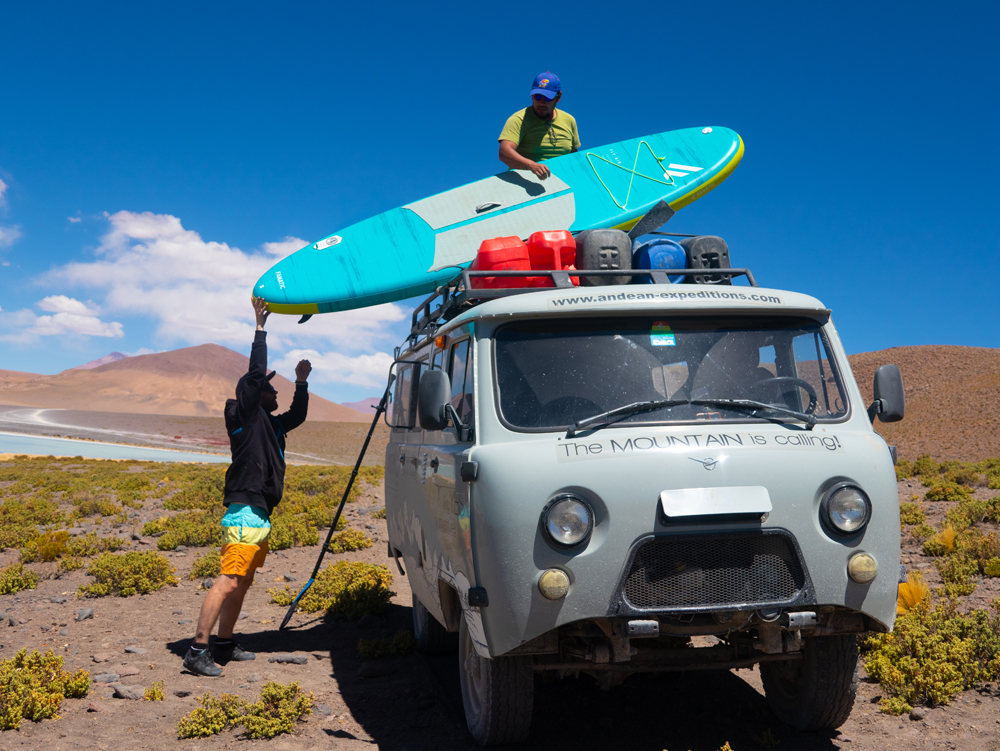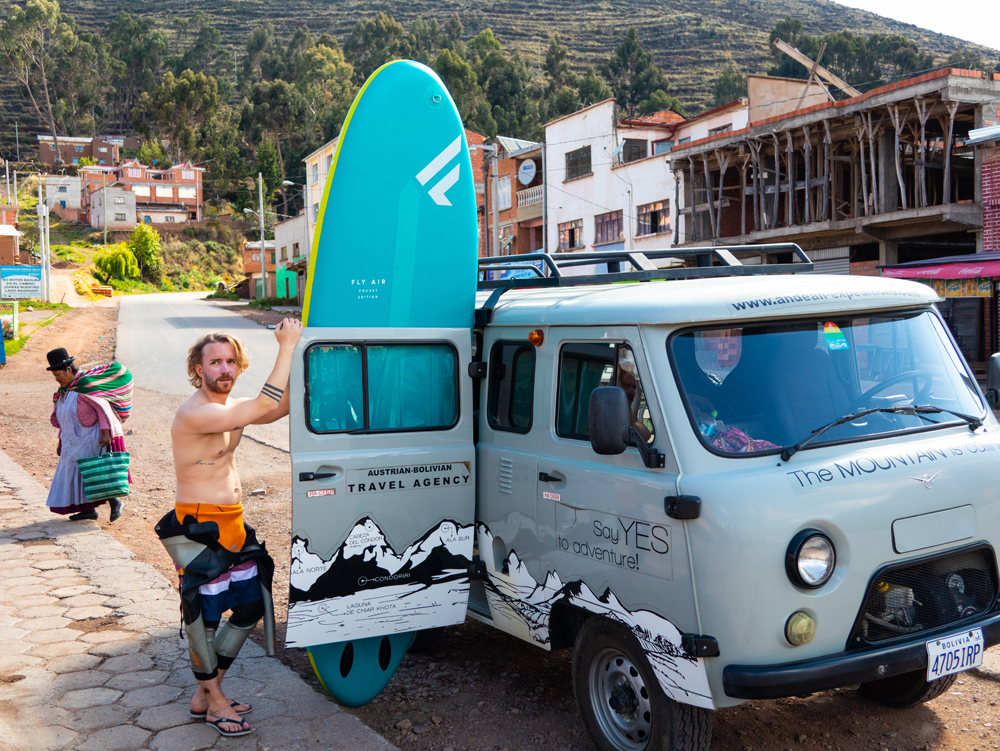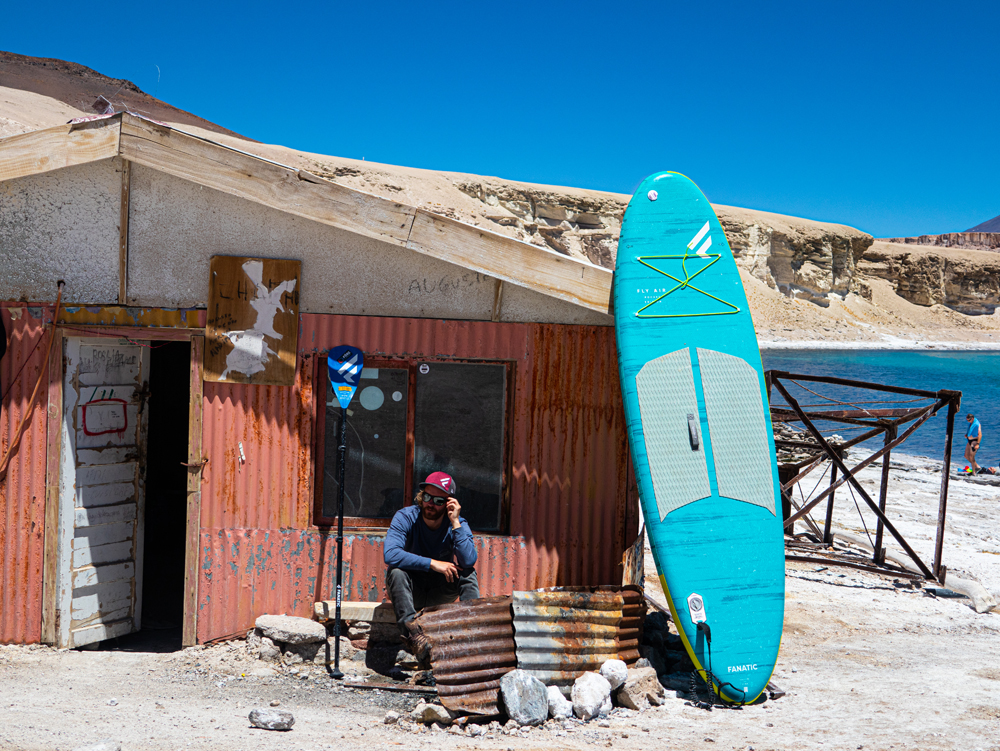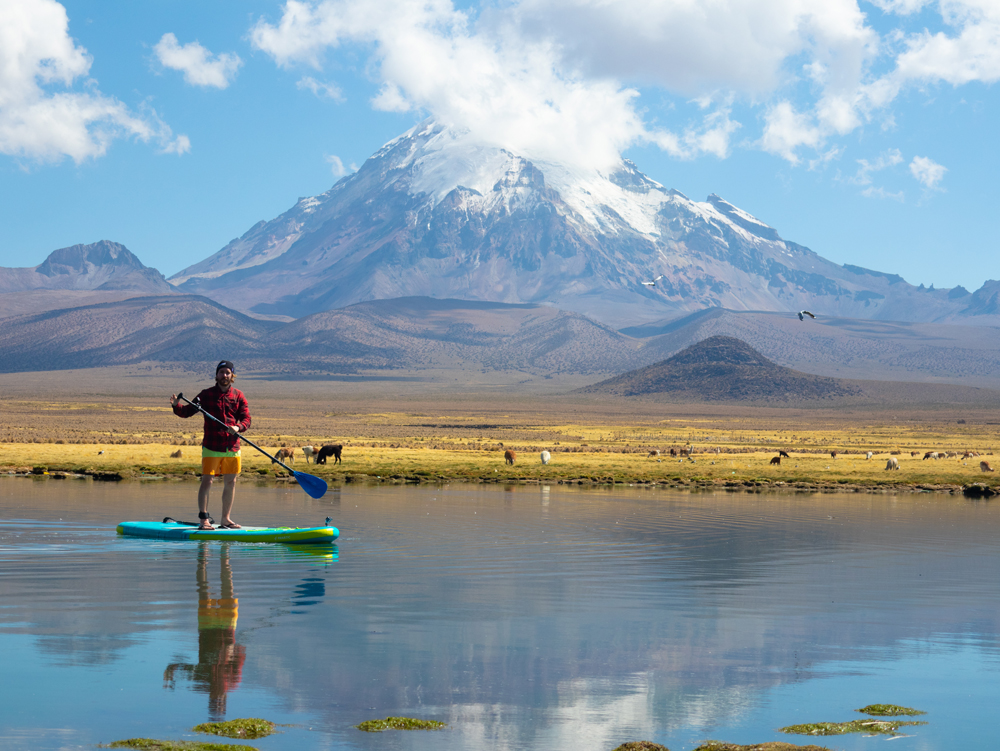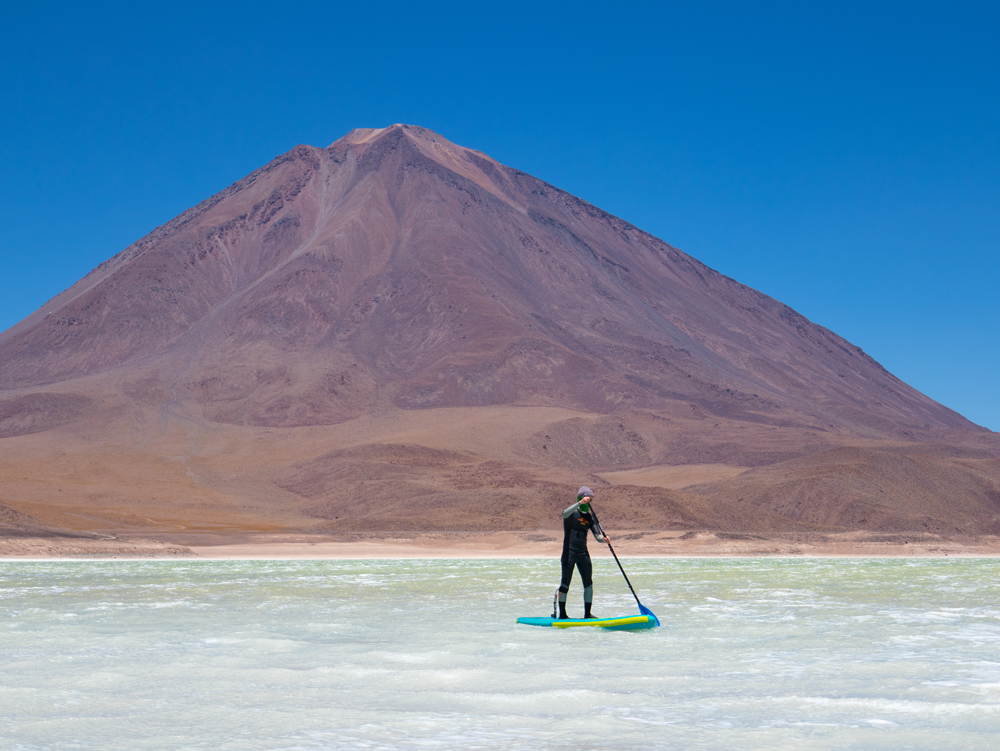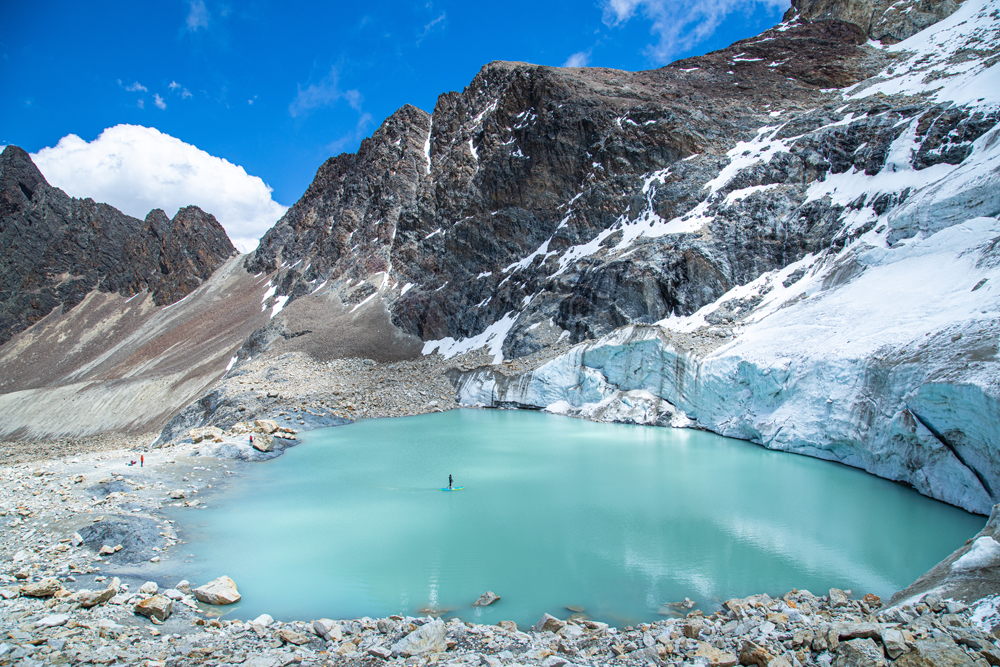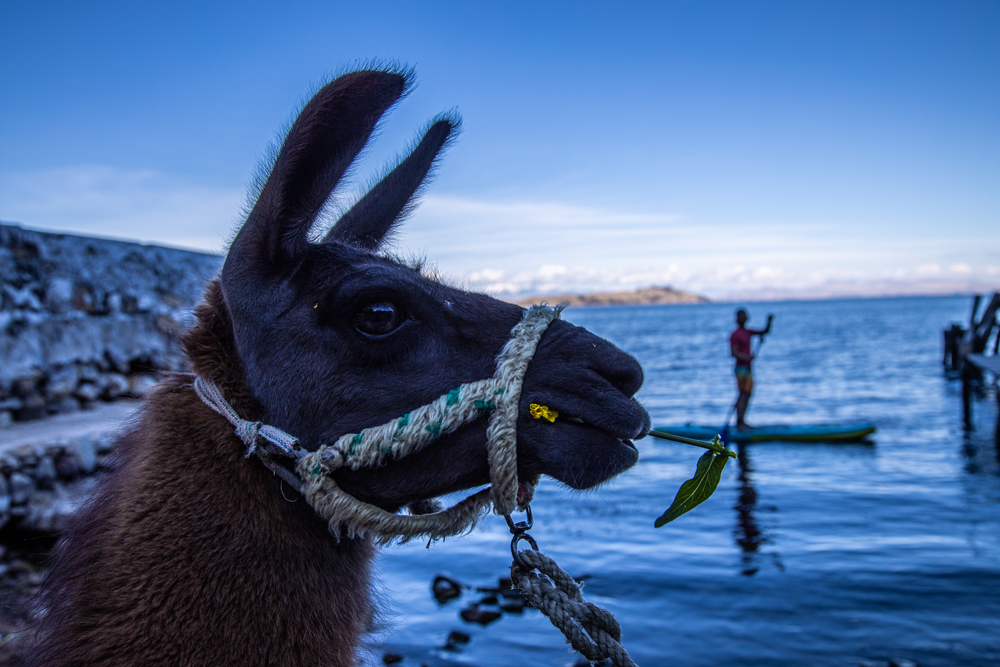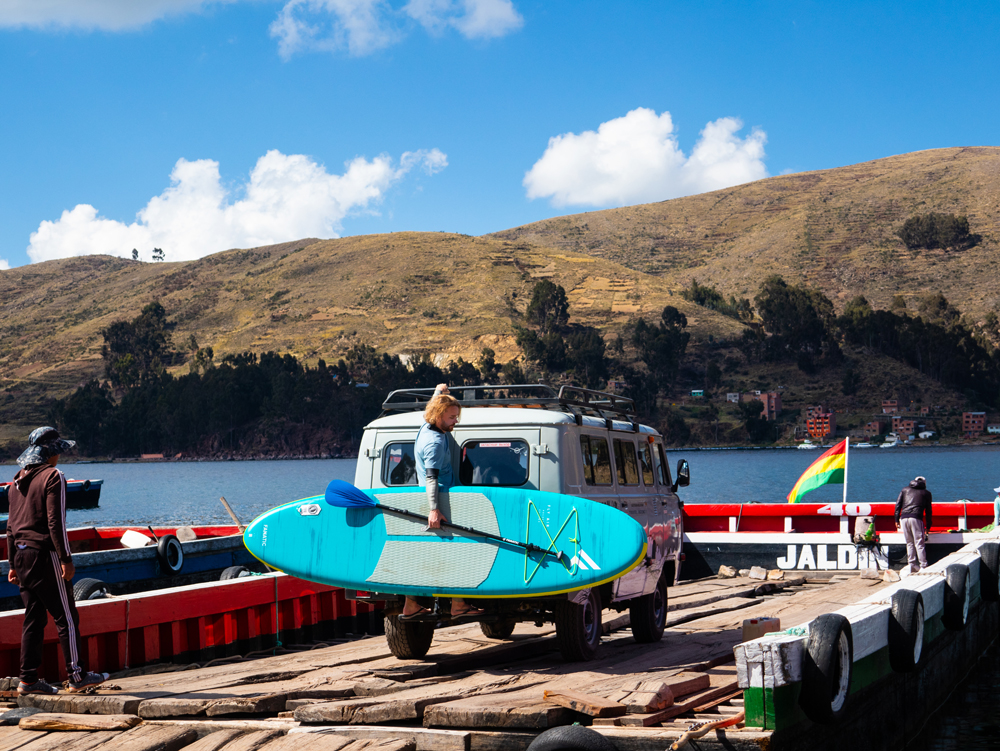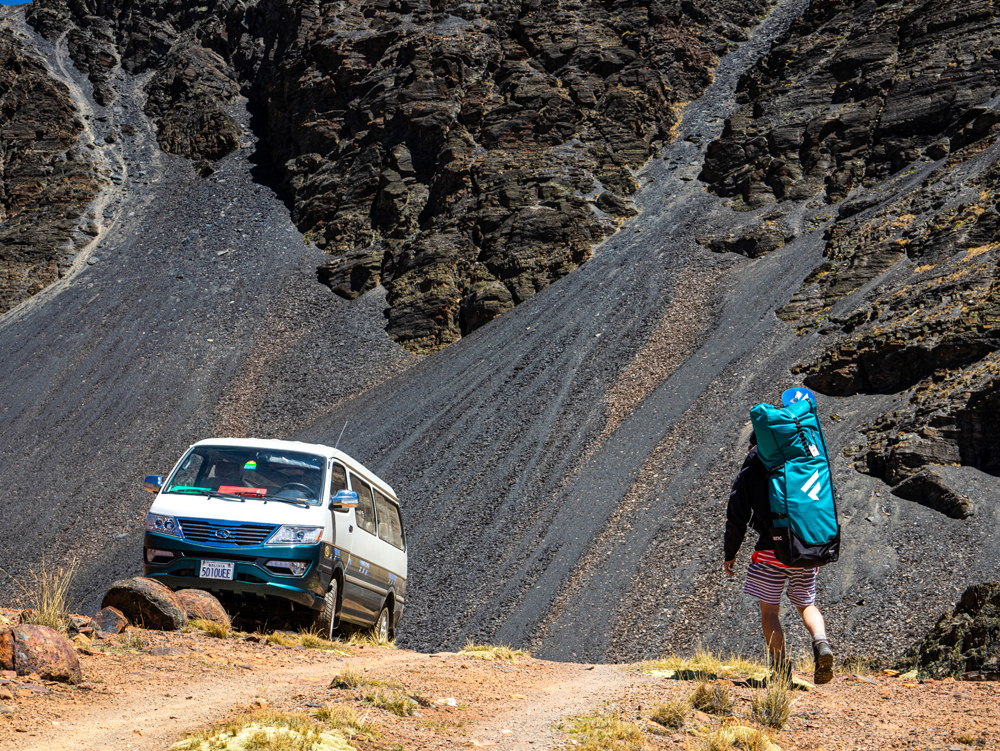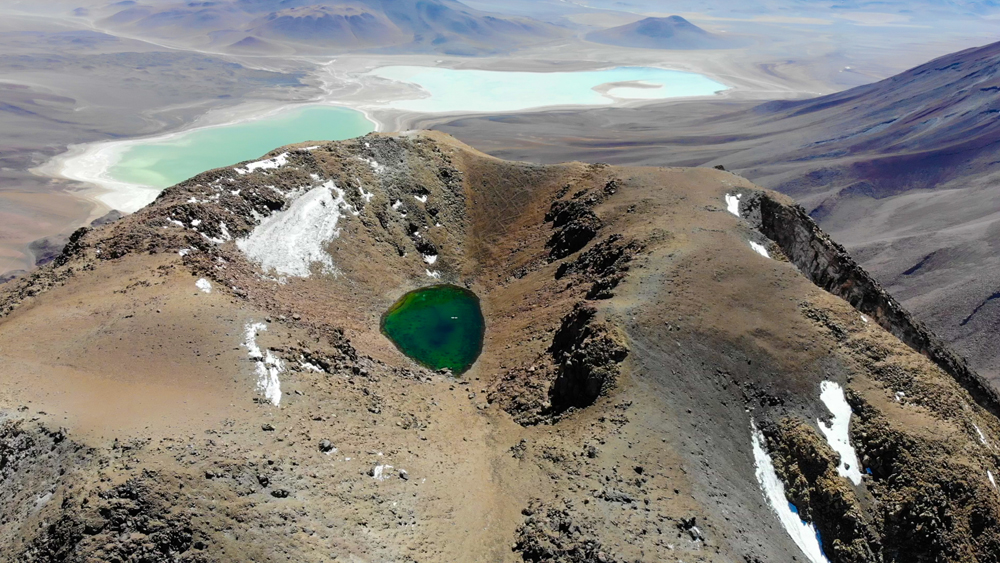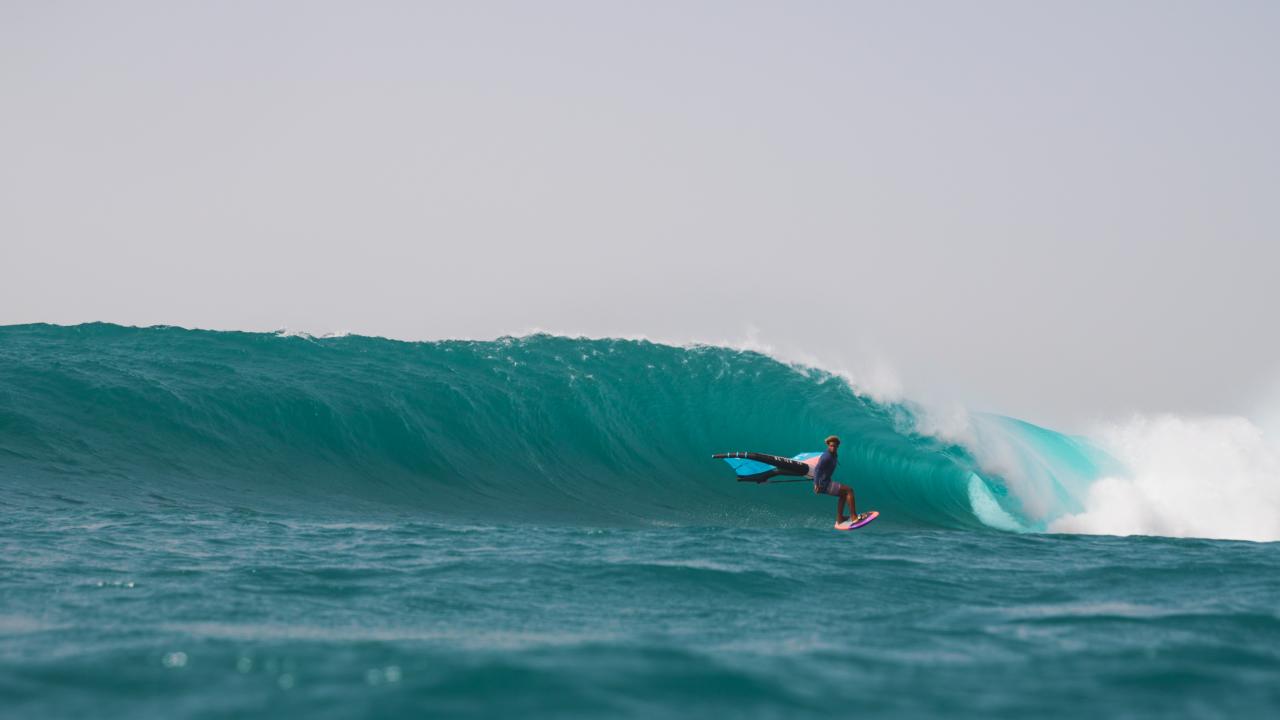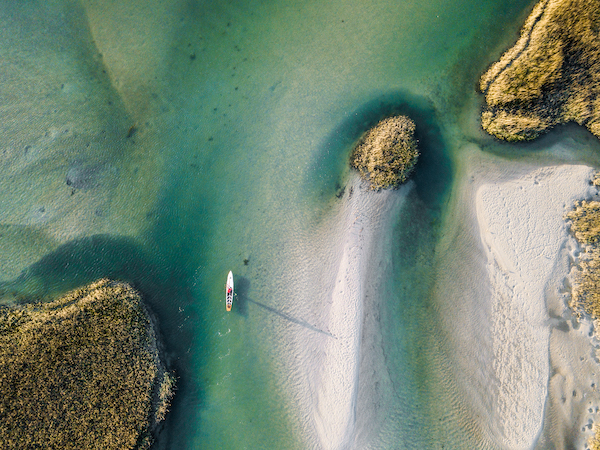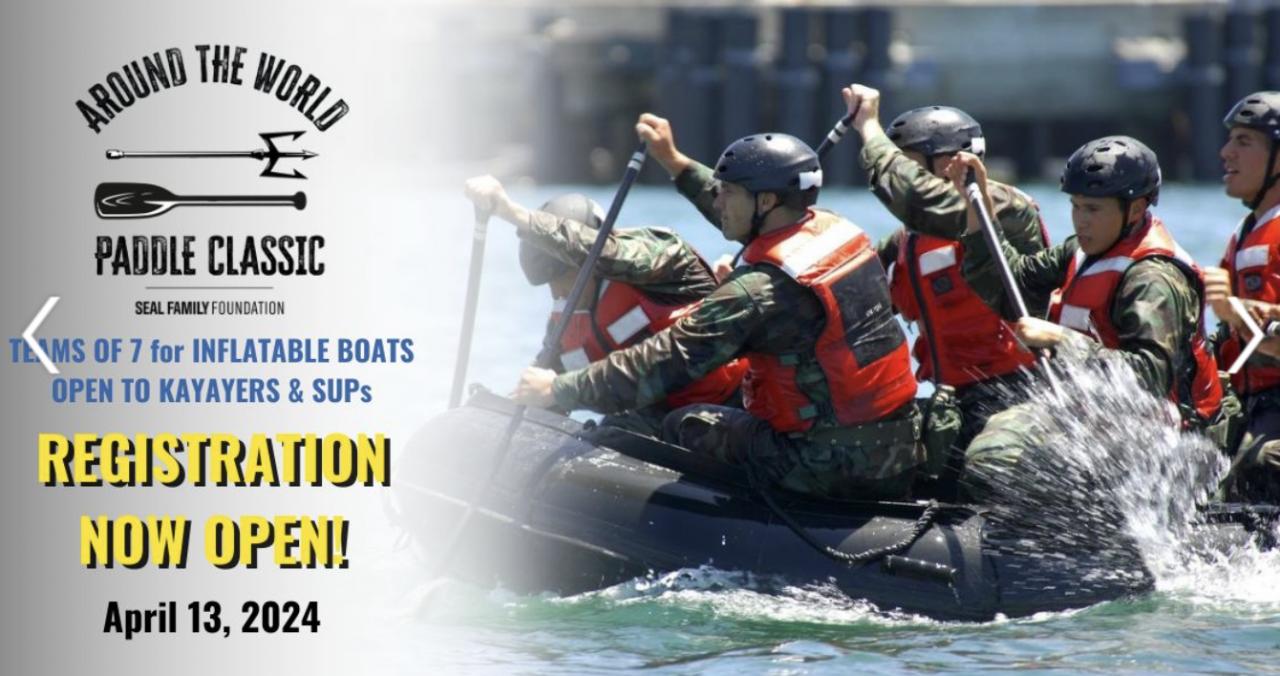Can you imagine yourself paddling 3000 kilometers (almost 1,900 miles) across Bolivia and Chile? I did! On the lookout for a new SUP adventure, I recently paddled my board, (and my arms and legs) to their limits on a stand up paddle expedition through South America. And, I set a new world record doing it.
I have paddled countless mountain lakes over recent years in Germany, Austria and Switzerland, and celebrated each experience. But at one level, I wanted more - much more. I wanted to test my physical limits and the limits of my iSUP. My goal was to hike up to and paddle the highest lakes on the planet and do something that no one had ever done with a stand up paddleboard. I wanted to set a world record. Determined, I set off for South America. Here there are countless mountain lakes and fantastic lagoons at dizzying heights.
I began my tour in La Paz, Bolivia, accompanied by my friend Simi, cameraman Daniel and guide Pika. From La Paz we entered into the surreal landscape of the Andes. We stopped at two mountain lagoons around La Paz. In the Serke Kota region, we paddled an impressive, beautiful lagoon at 4,886 meters above sea level. A day later, we paddled a glacial lake framed on one side by a huge ice wall. There we were, on water at over 5,000 meters above sea level! The impressive landscape, the incredibly blue water…. all of this took our breath away. Or maybe it was the thin mountain air.
But our actual triumph was to be something else, Licancabur Lake on the border between Chile and Bolivia. This exquisitely unique body of water actually sits in the middle of a volcanic crater at over 5,900 meters high above sea level. To paddle there, with my Fanatic FlyAir Pocket Edition, would be the new world’s record for the highest stand up paddle tour in the world. I couldn't wait.
My team and I continued on our way cross country towards Licancabur, pausing at multiple unique lagoons. In the Laguna Isla, we paddled between flamingos and llamas. On Lake Titicaca, we enjoyed the sensational view of the Royal Cordillera, a fabulous high mountain range in the Andean highlands. One feeling always accompanied us was to keep climbing higher and paddle a body of water that nobody had ever paddled before.
The popularity of stand up paddling has not yet reached Bolivia although there are vast bodies of water to explore. Wherever we stopped to inflate our boards, a crowd gathered. Local Bolivians were curious about the strange equipment and asked how it worked. 99% of the Bolivians we met saw a paddleboard for the first time in their lives… with us. Even at border stations, we had to show photos of our SUP expeditions again and again to get the inflatable backpack through the transit without any problems.
After 15 days of travel, we finally reached our destination. Licancabur Lake, a crater lake in the middle of a volcano, is a majestic cone made of sand and stone. Licancabur’s summit is 5,951 meters high. One has to descend another 50 meters to the crater formed by the explosive activity or collapse during a volcanic eruption. The two famous lagoons, Languna Blanca and Laguna Verde are directly in front of the mountain. We wanted to paddle at least one of them. We chose Laguna Verde which was maybe not the best idea as we later learned the water in the lagoon is toxic. In addition, a wind of almost 50 km/h blew around our ears on the paddle. If we had brought our Duotone iRig with us, we would have had big fun. Regardless, despite wind and poison we were on the water. The view of Licancabur mountain right in front of us - again - was stunning.
Two days later our primary purpose became serious. It was world record day and our arrival at Licancabur Lake. We had 1,200 meters in altitude and about five kilometers to go. The average gradient challenged us at about 60%. We headed out at two-thirty in the morning, fully bundled up to combat below zero temperatures. With 2 kg boards on our backs, we set off.
Incidentally, there was no hiking trail. There were a few visible paths over scree and sandy soil, but I want to be honest. We had all reached our physical limits, But we pressed onward and we did it. After six hours of laborious effort, we arrived on top of the summit. The lake inside the volcano was 50 meters below. Our final challenge was to inflate the paddle board. This is not my idea of fun at 5,900 meters above sea level, but it was worth it. Paddling into the crater and knowing that I had just set a new world record was simply indescribable. I will never forget.
This was still not enough. We wanted to overreach ourselves and conquer the highest lake in the world. The Ojos del Salado, located in Chile, sits at 6,370 meters in height. After almost four weeks of traveling, we were only two kilometers away but we could not get any further. There had been no precipitation at all during our entire expedition, but the night before our planned ascent the skies opened. It suddenly started to snow. The road to the mountain became impassable; the paths up the mountain were completely snowed in. Mountaineers who tried to climb the mountain hours before us were forceds to turn back because suddenly they were standing up to their waistlines in snow at 6,000 meters. Too risky. Since another 50 centimeters of fresh snow was announced for the coming night, we were forced to abort the final climb. A bitter and painful moment.
Our consolation is we set the record at Licancabur Lake. Ojos would have been the encore. I told myself, mountains don't have wings. They don't fly away. Another time window for climbing will open at the end of January. We will try then to return to reach the world's highest lake - and reach beyond our perceived limits once more.

